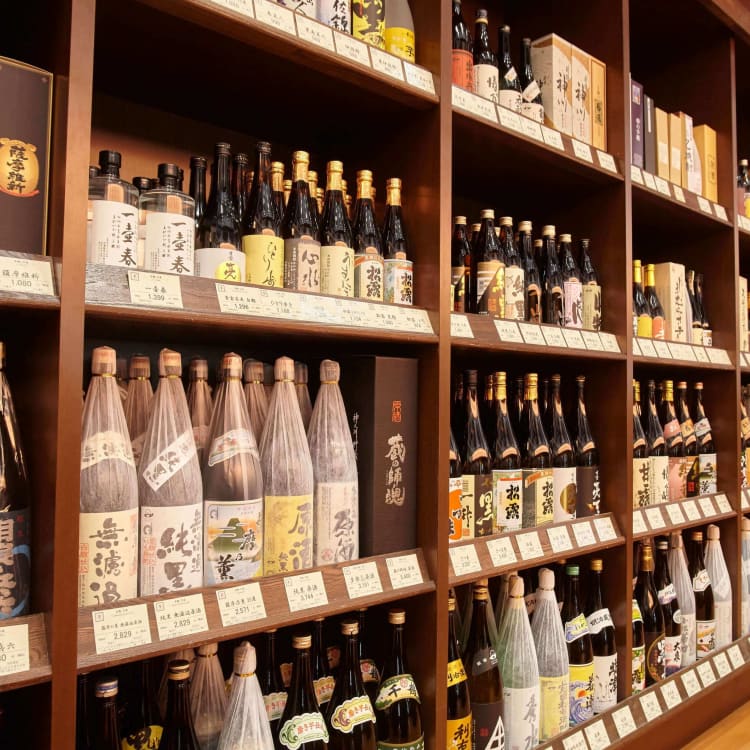
Story Kyushu’s Shochu by JNTO on 04 January 2018
Shochu first appeared in Kyushu over 500 years ago, and is closely related to awamori in nearby Okinawa. This clear distilled liquor was widely seen as a working-class drink due to its strong alcohol content. However, shochu has seen a boom in popularity recently, surpassing sake as Japan’s second most popular tipple after beer.
While shochu is made by over 600 distilleries across Japan, it remains intrinsically linked to Kyushu thanks to its long history on the island, with different regions developing their own unique versions based on local ingredients and tastes, ranging from mild and fragrant, to potent and smoky.
Types of shochu
Shochu comes in many varieties, with the most popular being made from imo (sweet potato), mugi (barley), and kome (rice), each producing different flavor profiles. Prefectures in the northern part of Kyushu – like Fukuoka, Oita and Nagasaki – tend to use barley, Kumamoto in central Kyushu is known for using rice, while Kagoshima in the south is famous for its sweet potato shochu.

Traditionally, shochu was made via single-distillation, retaining much of the original ingredients’ distinctive flavors, and resulting in an alcohol percentage of around 25º. Later during the Meiji era (1868-1912), makers used western-style continuous-distillation, resulting in a purer finished alcohol (of 40º or more) and subtler taste. Both methods are widely used today, as well as blended together, creating what’s known as konwa-shochu which has a stronger flavor and smoother taste.
In Kyushu, there are hundreds of different brands of shochu, with each label attracting its own following. Some of the best-known include Iichiko (from Oita) which is a clean-tasting mugi-shochu that’s the most popular internationally, while imo-shochu like Akakirishima (from Kagoshima) and Jinkoo (from Fukuoka) are well known for their sweet aroma and taste.
How to drink shochu
While shochu can be enjoyed neat, there’s myriad ways to drink it depending on your taste, the type of shochu, and which region you’re in. Shochu can be drunk neat, on the rocks, with ume (plum), with crushed ice, or oyu-wari (with warm or hot water). There are even different regional ways to prepare the warm water, including heating the water in a kuro joka (a specialized small kettle), pouring it into a glass then adding the shochu without stirring it. Others mix their shochu and water the day before, heating it before serving.
In general, mugi-shochu has a mild yet aromatic flavor, while kome-shochu has a refined sweetness similar to sake, and imo-shochu has a heavier body that is best served with hot water. shochu is also the key ingredient in extremely popular chuhai cocktails (chuhai being short for “shochu-highball”), where it’s mixed with juice, soda, or tea.

With such a wide variety of flavor profiles, it’s easy to pair shochu with food. For instance, the sweeter taste of imo-shochu goes well with rich foods like marbled beef, fragrant kome-shochu pairs with milder foods like sashimi and tofu, and mugi-shochu with its clean taste is suitable for any kind of food.
















































